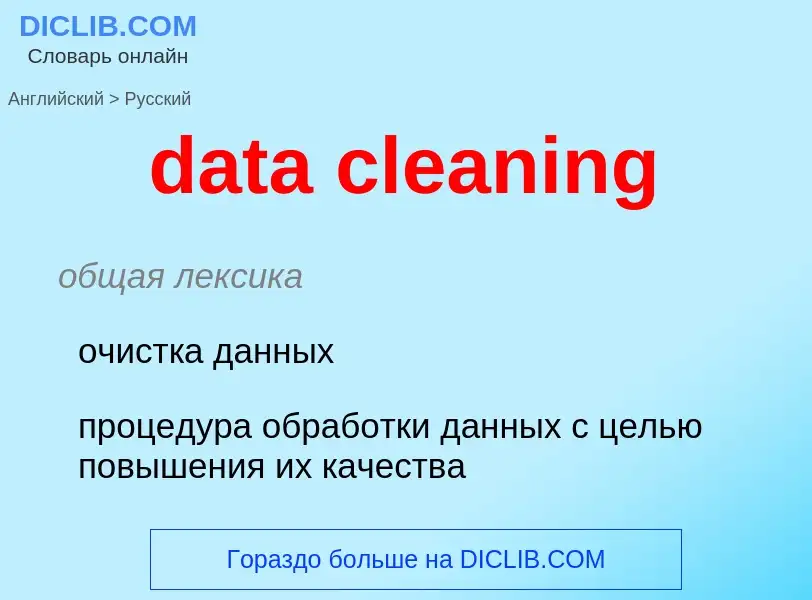Translation and analysis of words by ChatGPT artificial intelligence
On this page you can get a detailed analysis of a word or phrase, produced by the best artificial intelligence technology to date:
- how the word is used
- frequency of use
- it is used more often in oral or written speech
- word translation options
- usage examples (several phrases with translation)
- etymology
data cleaning - translation to English
общая лексика
очистка данных
процедура обработки данных с целью повышения их качества
Смотрите также
общая лексика
детергент
моющее средство
смывочный раствор
Definition
Wikipedia
Data cleansing or data cleaning is the process of detecting and correcting (or removing) corrupt or inaccurate records from a record set, table, or database and refers to identifying incomplete, incorrect, inaccurate or irrelevant parts of the data and then replacing, modifying, or deleting the dirty or coarse data. Data cleansing may be performed interactively with data wrangling tools, or as batch processing through scripting or a data quality firewall.
After cleansing, a data set should be consistent with other similar data sets in the system. The inconsistencies detected or removed may have been originally caused by user entry errors, by corruption in transmission or storage, or by different data dictionary definitions of similar entities in different stores. Data cleaning differs from data validation in that validation almost invariably means data is rejected from the system at entry and is performed at the time of entry, rather than on batches of data.
The actual process of data cleansing may involve removing typographical errors or validating and correcting values against a known list of entities. The validation may be strict (such as rejecting any address that does not have a valid postal code), or with fuzzy or approximate string matching (such as correcting records that partially match existing, known records). Some data cleansing solutions will clean data by cross-checking with a validated data set. A common data cleansing practice is data enhancement, where data is made more complete by adding related information. For example, appending addresses with any phone numbers related to that address. Data cleansing may also involve harmonization (or normalization) of data, which is the process of bringing together data of "varying file formats, naming conventions, and columns", and transforming it into one cohesive data set; a simple example is the expansion of abbreviations ("st, rd, etc." to "street, road, etcetera").



